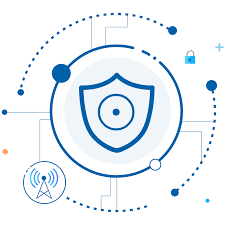Ensuring Robust 5G Network Security: Challenges and Solutions
The rollout of 5G networks marks a significant leap forward in telecommunications, promising unprecedented speeds, ultra-low latency, and the capacity to support massive IoT ecosystems. However, this technological advancement brings a new set of challenges in terms of network security. Ensuring robust 5G network security is paramount to protect sensitive data, maintain service integrity, and uphold user trust. In this blog, we will explore the key challenges and solutions associated with securing 5G networks.
The Unique Security Challenges of 5G Networks
1. Increased Attack Surface:
- Densification: 5G network Security relies on a dense deployment of small cells, creating numerous potential entry points for cyber attackers.
- IoT Integration: The proliferation of IoT devices connected to 5G networks increases the number of endpoints, many of which may have weak security measures.
2. Complexity and Interconnectivity:
- Network Slicing: 5G technology allows for network slicing, where multiple virtual networks operate on a single physical infrastructure. Each slice can have different security requirements, complicating overall security management.
- Legacy Integration: 5G networks must interoperate with existing 4G and 3G networks, which may have different security protocols and vulnerabilities.
3. Supply Chain Vulnerabilities:
- Hardware and Software: The reliance on various vendors for hardware and software components introduces risks related to supply chain security. Compromised components can lead to vulnerabilities being embedded in the network infrastructure.
Strategies for Enhancing 5G Network Security
1. Implementing Advanced Encryption:
- End-to-End Encryption: Ensure all data transmitted over the 5G network is encrypted end-to-end to protect against interception and eavesdropping.
- Secure Protocols: Utilize secure communication protocols that are resistant to known vulnerabilities and attacks.
2. Zero Trust Architecture:
- Access Control: Adopt a zero trust model where no device, user, or network segment is trusted by default. Implement strict access control mechanisms and continuously verify entities attempting to access the network.
- Micro-Segmentation: Divide the network into smaller, isolated segments to contain potential breaches and limit the lateral movement of attackers.
3. Advanced Threat Detection and Response:
- AI and Machine Learning: Deploy AI and machine learning algorithms to detect anomalies and identify potential threats in real-time. These technologies can analyze vast amounts of data and recognize patterns indicative of cyber attacks.
- Automated Response: Implement automated incident response systems to quickly contain and mitigate the impact of security breaches.
4. Securing the Supply Chain:
- Vendor Assessment: Conduct thorough security assessments of all vendors and their products. Ensure that they adhere to stringent security standards and practices.
- Firmware and Software Integrity: Regularly update firmware and software to patch vulnerabilities. Use cryptographic checks to verify the integrity of updates and components.
5. Comprehensive Security Policies:
- Policy Development: Develop and enforce comprehensive security policies that cover all aspects of 5G network operations, including device management, data protection, and user access.
- Regular Audits: Conduct regular security audits and assessments to identify and address vulnerabilities proactively.
The Role of Collaboration and Standards
1. Industry Collaboration:
- Shared Threat Intelligence: Collaborate with industry peers, government agencies, and cybersecurity organizations to share threat intelligence and best practices.
- Joint Security Initiatives: Participate in joint security initiatives and working groups to address common challenges and develop unified security standards.
2. Adherence to Standards:
- 3GPP and GSMA: Follow security standards and guidelines set by organizations like the 3rd Generation Partnership Project (3GPP) and the GSM Association GSMA. These standards provide a framework for implementing robust security measures in 5G networks.
- Compliance and Certification: Ensure compliance with relevant regulations and obtain security certifications to demonstrate a commitment to maintaining high security standards.
Conclusion
Securing 5G networks is a complex but essential endeavor to ensure the safe and reliable operation of next-generation telecommunications. By understanding the unique challenges posed by 5G technology and implementing comprehensive security strategies, telecom operators can protect their networks against evolving cyber threats. Collaboration within the industry and adherence to established standards will play a crucial role in achieving a secure 5G future.
As we embrace the transformative potential of 5G, let’s prioritize security to build a resilient and trustworthy digital infrastructure. For tailored 5G network security solutions, consult with SecurityGen, your trusted partner in safeguarding the future of telecommunications.
.jpg)



Comments
Post a Comment